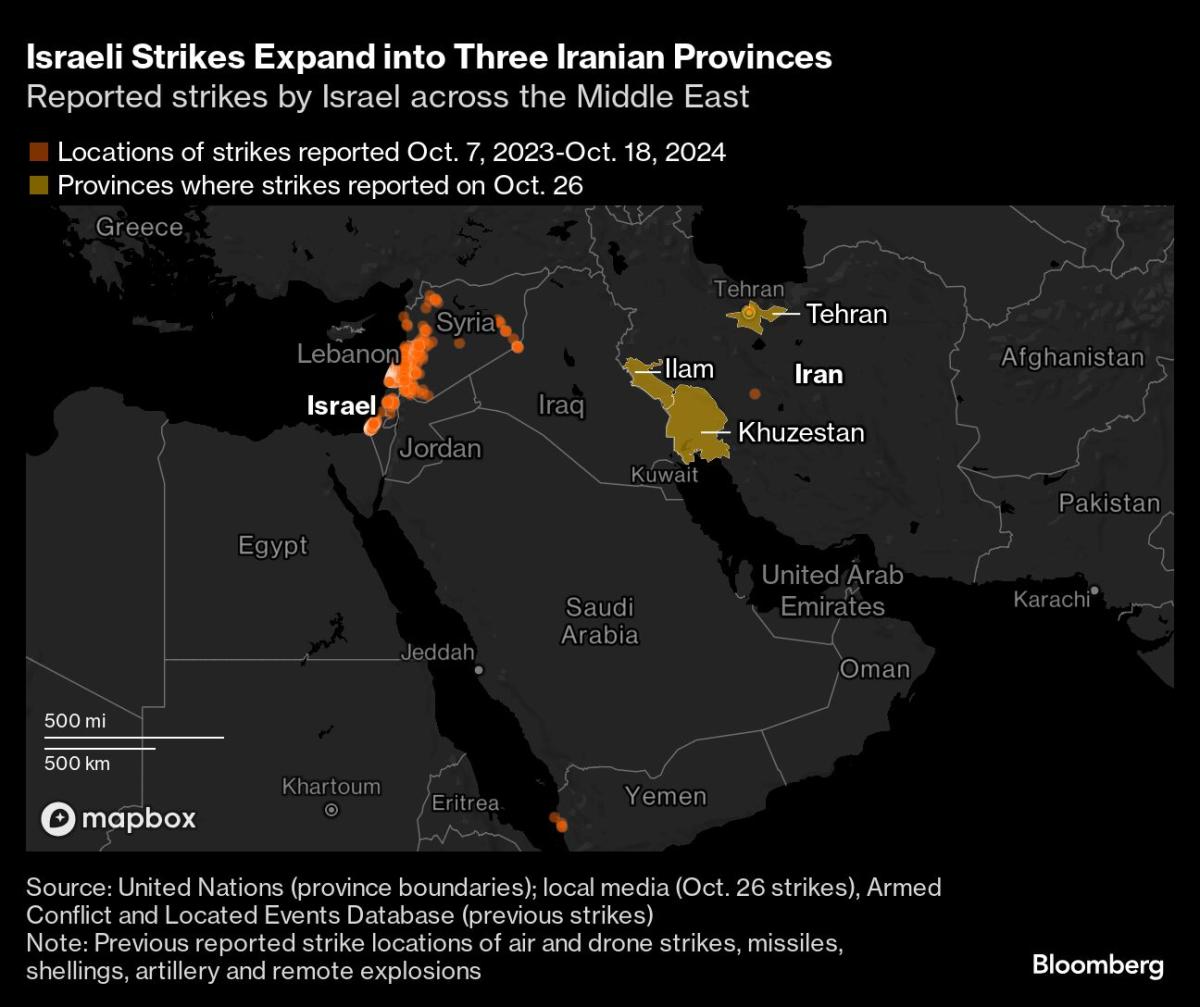(Bloomberg) — After sending more than 100 fighter planes to attack Iran, the Israeli government is seeking to walk a fine line: Officials there believe the attack did significant strategic damage but want to allow Iran to continue dismissing it as unworthy of response.
Most Read from Bloomberg
Orders went out to Israeli officials to stay mum on the details. Yet at a ceremony to mourn the losses from Hamas’ Oct. 7, 2023, invasion, Prime Minister Benjamin Netanyahu lauded the mission to Iran for “severely harming its defense capabilities and its ability to produce missiles that would be launched at us.”
The strike, he said, “was precise and powerful” and “achieved all its objectives.”
A readout of Israeli Defense Minister Yoav Gallant’s overnight phone call with US counterpart Lloyd Austin said they discussed “initial assessments regarding the success of the strikes against missile manufacturing facilities, surface-to-air missile arrays and Iranian aerial capabilities,” shedding more official light on targets.
Israeli officials, who spoke to Bloomberg on condition of anonymity to describe sensitive matters, gave more detail: They said some of the targets were anti-aircraft systems, including Russian-made S-300 batteries and some missile caches and missile-launch sites.
Analysts say that the Saturday mission may set the stage for another attack, possibly after the US election, which could be aimed at Iran’s nuclear program or its oil infrastructure.
“The fact that the military was able to take down Iran’s anti-aircraft radar systems is a strategic change. By doing so, Israel has unlocked the door for future attacks. That means that Iran’s nuclear program and its energy infrastructure are more vulnerable to a future decision by Israel or the United States to attack them,” said Meir Javedanfar, an Iran lecturer at Reichman University in Herzliya.
At the same time, CIA Director William Burns is in Qatar with Mossad Chief David Barnea, leading the Israeli delegation, for new discussions over a cease-fire with Hamas in Gaza.
A former official in Israel’s intelligence services told Bloomberg that Iran is thought to have some 20 to 30 S-300 batteries. Even if only some were taken down — media reports circulated estimates of between four and eight batteries — it was a clear message that more could be damaged in future attacks. The S-300 system will be hard to replenish given Russia’s need to prioritize its own defenses in its war with Ukraine.


Leave a Comment